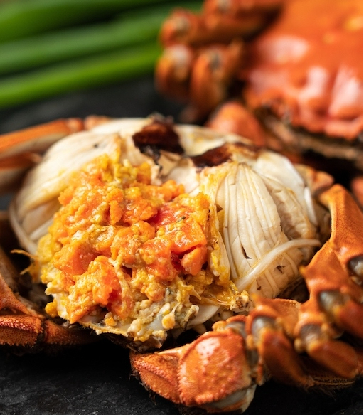“Lei Cha” (Chinese: 擂茶), or Thunder Tea Rice, is a traditional Hakka dish that tells the story of resilience and reverence for tradition. Found in Singapore’s hawker centres, it features rice topped with a vibrant mix of vegetables, peanuts, dried shrimp (sometimes), and pickled radish — each ingredient thoughtfully prepared for balance. The green soup, made primarily from basil, mint, and tea leaves, adds a refreshing yet comforting bitterness that cuts through the richness of the toppings. Thunder Tea Rice invites diners to slow down, savour the earthy flavours, and connect with the history that infuses every bite.

The Hakka or “ke jia” (Chinese: 客家) are the gypsies of China. Centuries of war and upheaval have caused them to leave their homeland in the Central Plains of China and migrate southwards. While the majority of them settled in Guangdong and Fujian, they have still managed to maintain their distinctive identity through the centuries, in terms of language, culture, and culinary practices, as evidenced in the Thunder Tea Rice.
Despite the Hakka’s playful adaptation of “thunder” ("lei") to label the dish, there is nary a thunderclap nor rumble in its preparation, for the tea is traditionally ground, using a long wooden pestle stick on a large pottery bowl in a circular fashion, rather than pounded. The term “lei cha” itself translates as "ground tea", as the cook would grind the ingredients until a thick, green paste has been obtained. The Chinese characters for “thunder” (雷) and “grind” (擂) happen to sound the same, resulting to the dish's Hakka name.
Thunder Tea Rice was thought to be invented 1,800 years ago, during the turbulent Three Kingdoms era. A popular Chinese folk legend tells of the troops of General Zhang Fei suffering from an outbreak of a mysterious plague during a military expedition. They were cured by partaking Thunder Tea Rice, prepared by a resourceful doctor who had mixed and ground tea leaves, wild ginger root, rice, and water into a paste for the sick soldiers to consume. Thereafter, Thunder Tea Rice was much valued for its curative, as well as nutritive properties.

Thunder Tea Rice is recognisable by its distinctive milky, emerald-green-coloured, chlorophyll-rich appearance — after the “lei cha” paste ingredients have been ground into a thick, green consistency, hot water (or broth or stock) will be added in order to obtain the eponymous green-hued “lei cha” soup. Accompanying the soup will be a bowl of steamed rice, attractively adorned with an assortment of finely-chopped vegetable garnishes, nuts, and seeds.
The composition of Thunder Tea Rice is imbued with the versatility and adaptability of the Hakkas, necessitated by their migratory lifestyle. Variances in the composition of ingredients for one’s “lei cha” often occur, as they depend upon the places where the Hakkas settle. However, the basic ingredients for the dish will remain largely the same: green tea, mugwort, basil, fresh mint, coriander, peanuts, and sesame seeds for the paste; plus spinach, cabbage, long beans, fried tofu (tau kwa), preserved radish (chai por), and more toasted peanuts and sesame seeds as garnishes for the accompanying rice dish.

To savour this delectable dish in Singapore, make a beeline for Traditional Hakka Lui Cha at the Jurong West 505 Market & Food Centre. There, Mr. Chang, a Hepo Hakka, prepares a mean Thunder Tea Rice. He also gives his customers a choice of either white or brown rice — and many opt for the latter, as its nuttiness gives the overall flavour of the dish a delicious lift.
Mr. Chang also explains that Thunder Tea Rice is a signature dish of the Hepo Hakkas, who originated from the Jiexi County in Guangdong Province, China. Jiexi County natives have been emigrating in large numbers to Southeast Asia for the last two centuries, with many settling down in Singapore and the neighbouring Malay states — Johor and Negeri Sembilan.

Mr. Chang's choice of tea leaves for making his "lei cha" paste is Tieguanyin, an assertive-flavoured, superior varietal of Chinese oolong tea. He grinds the tea leaves with basil, coriander, and mint. Peanuts and sesame seeds are then added to thicken the paste. Before serving, hot water is stirred into the mixture, giving the paste a spearmint-green milkshake-like appearance, but one that delivers a savoury punch like no other.
Traditional Hakka Lui Cha's Thunder Tea Rice consists of finely-sliced cabbage, chopped green beans, and choy sum greens, all sautéed separately, so they can be attractively arrayed atop the rice in the bowl. Finely-diced tofu puffs, toasted peanuts, and preserved salty-sweet radish (chai por) are added to complete the dish. The preserved radish, Mr. Chang says, is the secret to his Thunder Tea Rice as it is obtained directly from China and made with a secret recipe.
Upon receiving the Thunder Tea Rice, one should give the whole concoction a thorough toss — the resultant rice salad is akin to a most delightful Oriental Cobb Salad, albeit one with delightful layers of inter-playing textures and flavours.

The Thunder Tea Rice soup itself is added to the dish as one desires — some prefer a sparing “salad dressing” approach, whilst others liked it porridge-like, tossing the entire bowl of soup onto their rice.
The Hakka Thunder Tea Rice, with its fresh, green vegetable-nuts-and-seeds composition, makes it an ideal 21st-century health food option. Just as its curative qualities saved a 3rd-century army, Thunder Tea Rice can be at the forefront of a present-day food revolution, where one chooses a sustainable, vegan or vegetarian-friendly, environment-safe meal without sacrificing the joy of eating. It really does taste good.






















